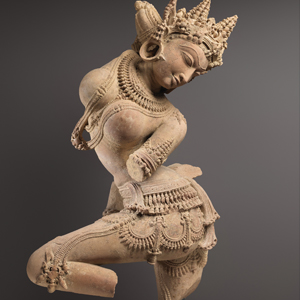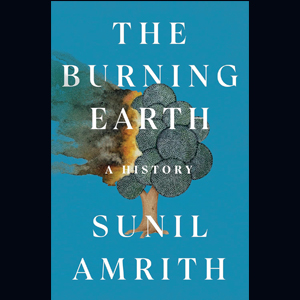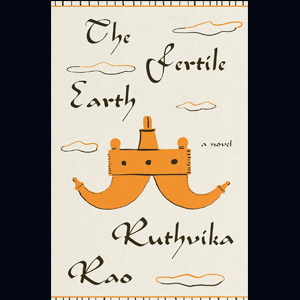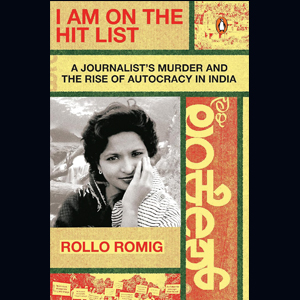Briefs/ Visiting India & Visitors from India/ India’s Stolen Antiquities Recovered/ Book Matters.

WHO, WHAT, WHERE, WHEN, & WHY
Shailaja Paik, a Dalit professor at the University of Cincinnati, has shattered barriers. Recently, she was picked as one of this year’s 22 MacArthur Fellows, each of whom will get a “genius” grant of $800,000. Paik, who grew up in a Pune slum, received her master’s degree in India and her PhD in Britian. The author of two books, she explores the intersection of caste, gender, and sexuality through the lives of Dalit women.

Sreenidi Bala, 16, is one of 10 teens on the White House’s 2024 “Girls Leading Change” list. An advocate for expanding STEM education to neurodivergent students, Bala also founded Code for All Minds. Also on the list is Pragathi Kasani-Akula, 17, creator of a low-cost, non-invasive prototype for detecting triple-negative breast cancer. Others include Meghna Pramoda, 17, and Siona Pramoda, 16, who’re digital safety advocates.

Shams Charania, a sports reporter with more than 2.4 million followers on X, is joining ESPN as the network’s Senior NBA Insider. The 30-year-old Pakistani American, a graduate of Loyola University Chicago, has been covering sports since he was a student. He has worked for The Athletic, Stadium, and FanDuel TV. The Chicago native had covered games in the neighboring states after he was denied credentials for Bulls games.

Sandhya Suri, who wrote and directed a Hindi film titled Santosh, grew up in Britain. Her documentaries include I for India, which is based on her father’s immigrant experiences. Santosh, set in rural northern India, is Suri’s debut feature film. It’s about a constable’s widow who inherits his job. In another first, Santosh is Britain’s first non- English-language entry for Best International Feature Film at the Academy Awards.

Dhruvi Patel, who founded 3D Charities and is majoring in computer information systems at Quinnipiac University, CT, became Miss India Worldwide 2024. The pageant was held in Edison, NJ, where Sierra Suret of Guadeloupe was crowned Miss Teen India Worldwide. SuAnn Mouttet of Trinidad and Tobago won the title of Mrs. India Worldwide 2024. In the Miss category, Lisa Abdoelhak of Suriname became the first runner-up.

Anita Dongre, a well-known fashion designer, is the co-creator of Mattel’s Barbie Diwali doll. As the company notes, this hit doll is presented in a Moonlight Bloom set, with a choli top and skirt lush with dahlias, jasmines, and an Indian lotus representing strength and beauty. Jaipur, Dongre’s hometown, inspired her conception of the doll. In addition to the House of Anita Dongre, she founded Grassroot, Pinkcity, and Global Desi.

Ravi Ahuja is taking over as the president and CEO of Sony Pictures Entertainment. He joined the company in 2021 as the chairman of its global TV studios and business related to Sony Pictures TV. Ahuja has served as CFO of Walt Disney Television, CFO of the Fox Networks Group, and CFO for Virgin Entertainment Group. He received his bachelor’s and MBA degrees from the Wharton School of the University of Pennsylvania.

Salman Rushdie, whose multiple honors include two Booker Prizes for his groundbreaking Midnight’s Children, is a 2024 National Book Award finalist for Knife: Meditations After an Attempted Murder. There are four other finalists in this nonfiction category, and the winner will be announced this month. In the memoir, Rushdie, who survived a horrific knife attack in 2022, writes about the incident and his recovery.
> >> >> >>
VISITING INDIA & VISITORS FROM INDIA
 Travelers heading to India may be curious about the nation’s UNESCO World Heritage sites. Moidams, the Mound-Burial System of the Ahom Dynasty in Assam, was added to the list this year, bringing the total number of sites in India to 43. Similar to other ancient royal burial sites, the Moidams continued to be built even after the Ahom people converted to Hinduism, except now it was the ashes that got buried. In 2023, UNESCO picked two sites—Santiniketan (West Bengal) and the Sacred Ensembles of the Hoysalas (Karnataka)—from India. Of course, some sites on the list will be familiar even to casual visitors. In 1983, when UNESCO started the list, the Taj Mahal, Agra Fort, and the Ajanta and Ellora Caves were included. The next year also saw the addition of famous sites: Konark Sun Temple and Mahabalipuram Monuments. And in 1985, Assam’s Kaziranga National Park became the first Indian national park to make it to the list.
Travelers heading to India may be curious about the nation’s UNESCO World Heritage sites. Moidams, the Mound-Burial System of the Ahom Dynasty in Assam, was added to the list this year, bringing the total number of sites in India to 43. Similar to other ancient royal burial sites, the Moidams continued to be built even after the Ahom people converted to Hinduism, except now it was the ashes that got buried. In 2023, UNESCO picked two sites—Santiniketan (West Bengal) and the Sacred Ensembles of the Hoysalas (Karnataka)—from India. Of course, some sites on the list will be familiar even to casual visitors. In 1983, when UNESCO started the list, the Taj Mahal, Agra Fort, and the Ajanta and Ellora Caves were included. The next year also saw the addition of famous sites: Konark Sun Temple and Mahabalipuram Monuments. And in 1985, Assam’s Kaziranga National Park became the first Indian national park to make it to the list.
For Indian tourists, the tourism boom is not limited to their country. They’re heading abroad in record numbers, and one estimate notes that their spending in other nations grew by three times between 2010 and 2023, reaching $33 billion. The countries they go to are usually closer to home, with some of the most popular destinations being Singapore, Thailand, and Dubai. Vietnam and Turkey are also gaining attention, as more airlines enter the Indian market. There are now direct flights to 322 foreign destinations from 31 Indian cities, as The Economist points out. Some countries are making travel easier by offering e-visas. Azerbaijan, for instance, saw a big jump in tourist traffic from India because of e-visas, the magazine adds. Thailand eliminated visa requirements for Indians, as did Kenya, Sri Lanka, and Iran.
/|\ /| \ /|\ /| \
INDIA’S STOLEN ANTIQUITIES RECOVERED

The U.S. recently returned 297 antiquities that were taken illegally from India over the years. India’s Ministry of External Affairs, which notes that the period spans almost 4000 years (2000 BCE-1900 CE), lists the following repatriated treasures: (1) Apsara in sandstone from central India belonging to 10-11th century CE. (2) Jain Tirthankar in bronze from central India belonging to 15-16th century CE. (3) Terracotta vase from eastern India belonging to 3-4th century CE. (4) Stone sculpture from southern India belonging to 1st century BCE-1st century CE. (5) Lord Ganesh in Bronze from southern India belonging to 17-18th century CE. (6) Standing Lord Buddha in sandstone from northern India belonging to 15-16th century CE. (7) Lord Vishnu in bronze from eastern India belonging to 17-18th century CE. (8) Anthropomorphic figure in copper from northern India belonging to 2000-1800 BCE. (9) Lord Krishna in bronze from southern India belonging to 17-18th century CE. (10) Lord Karthikeya in granite from southern India belonging to 13-14th century CE.
This haul was in addition to the 578 antiquities, stolen from various regions of India, that had already been returned by the U.S. since 2016. While the looting of India’s treasures, by professionals as well as opportunistic amateurs, has been going on for a long time, it’s only in the last dozen years that the Indian government and private sleuths have intensified their efforts to get them back. Before that, reportedly, India recovered fewer than 25 stolen artefacts over a 35-year period. One group of private detectives that has received attention is called the India Pride Project (IPP), founded in 2014 by Singapore-based S. Vijay Kumar and Anurag Saxena. It has volunteer sleuths around the world.
& & & & & & & & & &
BOOK MATTERS

Quarterlife (Liveright), by Devika Rege. In this debut novel, a cohort of twenty- and thirty-something characters are trying to find meaning and purpose in a country that has taken a troubling turn under a strong, charismatic leader. As the story unfolds, an election has brought the polarizing Bharat Party to power. There is both peril and promise. We have three protagonists, along with several minor characters, in a polyphonic novel that’s not conventionally plotted. Instead, it captures the zeitgeist of this generation in today’s India. Naren, a U.S. green card-holder and disillusioned Wall Street consultant, is back in India, where his younger brother, Rohit, owns a successful studio called Black Box. Amanda, a do-gooder from America, is also on a search in India. Anuradha Marwah say that it’s an “exploration of the relationship of the self with the nation in the fashion of the big novels of Salman Rushdie, Amitav Ghosh. . .” Rege, who won the inaugural Ramnath Goenka Sahitya Samman, is an Iowa Writers’ Workshop graduate.

The Burning Earth: A History (Norton), by Sunil Amrith. Many people are in denial about global warming, but relentless disasters caused by hurricanes, floods, droughts, and wildfires remind us that climate change is real and perhaps irreversible. In this timely book, Amrith, an award-winning global historian and environmentalist at Yale University, looks at three E’s (Environment, Empire, Ecocide) to give readers a sweeping overview of our plundered and troubled planet’s history since the 13th century. Separated into three periods (1200-1800, 1800-1945, 1945-2025), this ecological story—which will “set you on fire,” according to historian Jill Lepore—touches on imperialism, exploitation, capitalism, extraction, greed, and migration. “It is history for an urban, globalized, and divided planet, written from a position of empathy for the all-too-human dreams of fossil-fueled escape that now lie in ruins,” says Amrith. A native of Singapore, he draws on primary sources as well as extensive travels for his multi-perspective works.

The Fertile Earth (Flatiron), by Ruthvika Rao. Rather than another lawyer, here we have a computer scientist who was drawn to fiction writing. Like Nishanth Injam, the Illinois-based software developer who became a lauded short fiction writer, Michigan-based Rao grew up in Telangana. Unlike Injam, though, she makes her debut with a historical novel, which spans the second half of the 20th century and revolves around four characters in rural Telangana. Vijaya and her younger sister, Sree, are the daughters of a prominent landowner in Irumi, a fictional village. Krishna and Ranga, also siblings, are the sons of a servant. As childhood friends, they all head to the jungle on a quest, leading to a saga which is at its heart, as author Tania James notes, “a transgressive love story that dares to bloom in a world of caste-based violence, vengeance, and political transformation.” Rao, an Iowa Writers’ Workshop graduate, was inspired by the Indian epics and by grand modern novels such as A Suitable Boy and Doctor Zhivago.

I Am on the Hit List: A Journalist’s Murder and the Rise of Autocracy in India (Penguin), by Rollo Romig. Gauri Lankesh’s cold-blooded murder still reverberates, though it happened in 2017. Romig, an American journalist who’s been reporting from India since 2013, gets to the bottom of the murder in a wide-ranging work that’s also an investigation of a society riven by Hindu nationalism. Lankesh’s former colleagues make an appearance, but so do militant outfits, religious cults, and organized crime groups. Despite constant threats, Lankesh, who owned a tabloid-style Kannada weekly, remained a fearless journalist. Romig digs deeper to understand “the rise of autocracy,” and he sheds light on the murder of other activists—Govind Pansare, M.M. Kalburgi, and Narendra Dabholkar—by right-wing fanatics. “If you want to understand the grave threat to democracy in present-day India, and South India in particular, you could do no better than to read Rollo Romig’s gripping book of reportage,” notes Suketu Mehta.
Enjoyed reading Khabar magazine? Subscribe to Khabar and get a full digital copy of this Indian-American community magazine.
blog comments powered by Disqus










